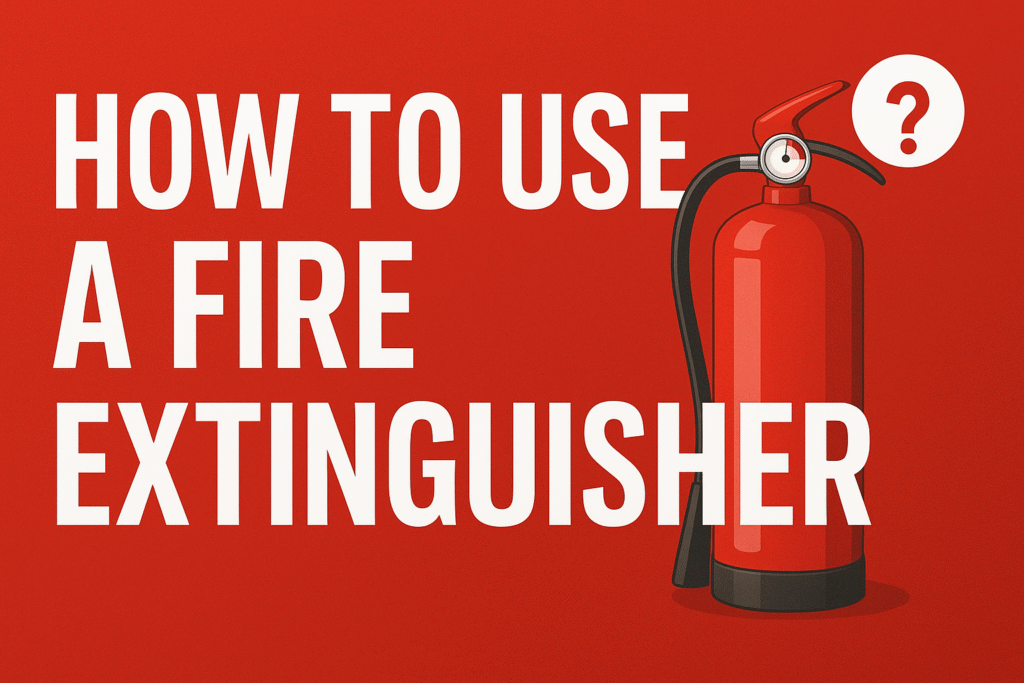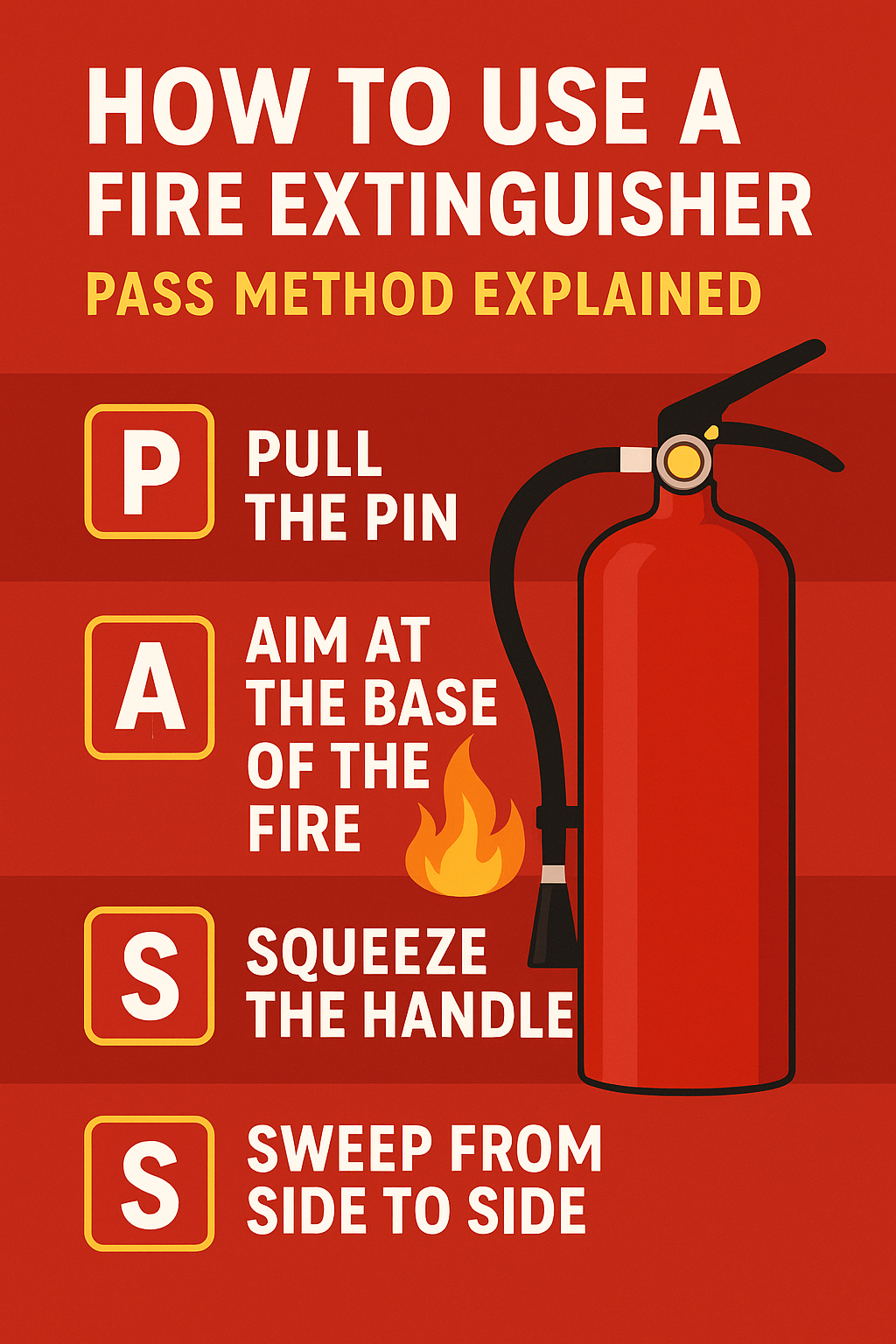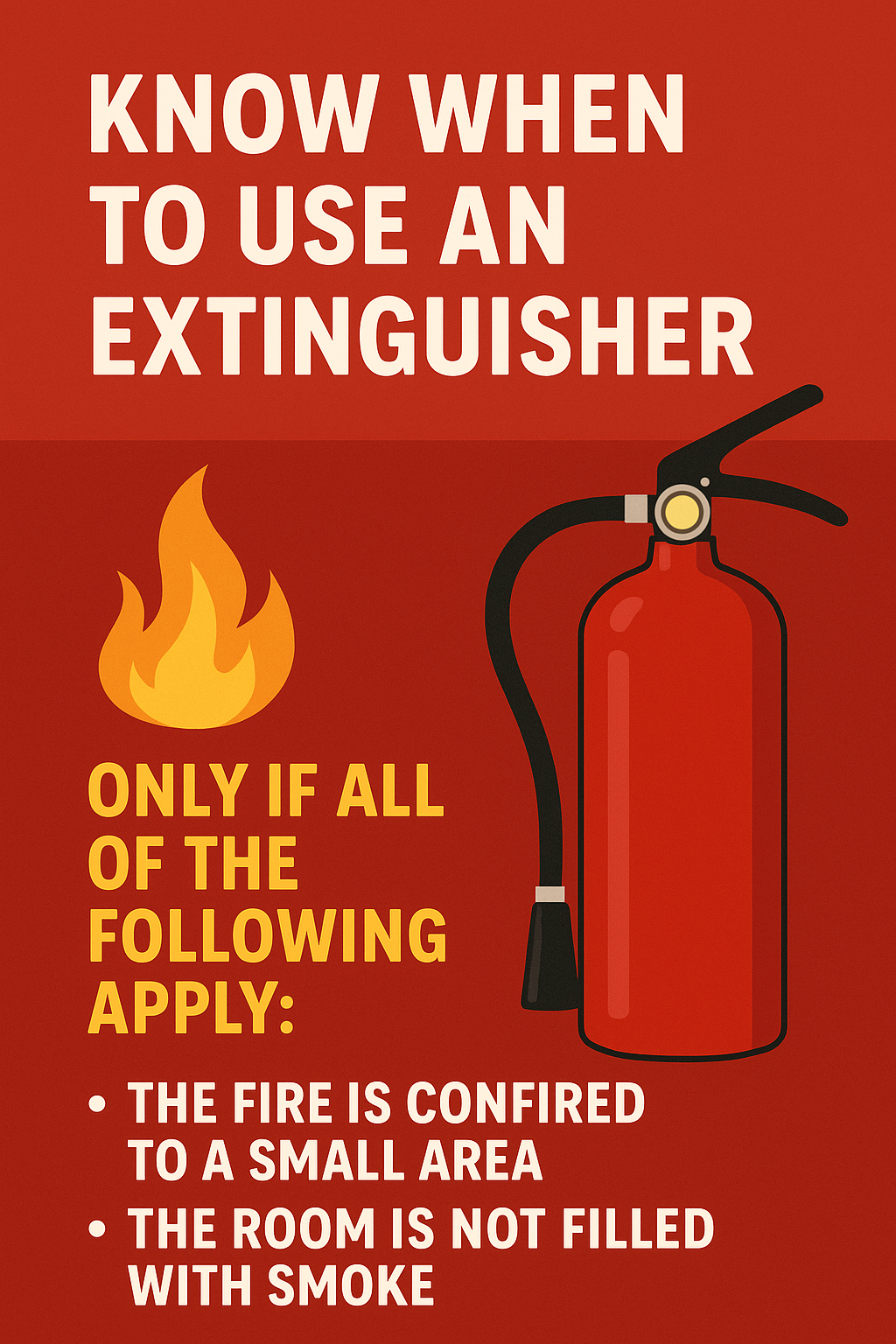How to Use a Fire Extinguisher properly could mean the difference between a minor incident and a major disaster. Whether you’re at home, at work, or in a public building, knowing how to respond swiftly and effectively when fire breaks out is a life-saving skill.

In this article, we’ll explain the PASS method—the globally recognized technique for using fire extinguishers safely and effectively.
Why Knowing How to Use a Fire Extinguisher Is Essential
Fire extinguishers are often the first line of defense when a fire breaks out. But owning one isn’t enough. You must also:
- Know how to use it
- Be trained in recognizing when it’s safe to use
- Understand the different types of extinguishers
- Avoid putting yourself or others in danger
Incorrect use can worsen a fire or delay evacuation. Training your team in basic fire extinguisher operation can help meet OSHA and OHSA standards.
Step-by-Step: The PASS Method
The PASS acronym is the simplest and most effective way to remember how to use a fire extinguisher.

Here’s what it stands for:
P – Pull the Pin
The pin prevents accidental discharge. Pulling it unlocks the extinguisher so it can be activated.
Tip: Hold the extinguisher upright and aim away from your body as you remove the pin.
A – Aim at the Base of the Fire
Point the nozzle or hose at the base, not the flames. Fires are fueled from the bottom; extinguishing the flames alone won’t stop the fire from reigniting.
Tip: Stand about 6–10 feet away when aiming. Get closer only if it’s safe.
S – Squeeze the Handle
Squeeze the lever slowly and evenly to discharge the extinguishing agent. Release the handle to stop.
Tip: A short burst may help conserve the agent and allow more control.
S – Sweep from Side to Side
Move the nozzle side to side while aiming at the base. Continue until the fire is out.
Tip: Don’t turn your back on the fire. Watch for flare-ups and be ready to use the extinguisher again if needed.
Know When to Use an Extinguisher
Before attempting to extinguish a fire:
✅ Ensure the fire is small and contained (like a wastebasket)
✅ Have a clear exit behind you
✅ Make sure you’re using the right type of extinguisher
✅ The area should not be filled with smoke or toxic fumes

When NOT to use one:
- The fire is spreading quickly
- You don’t know what’s burning (especially chemicals)
- You are unsure how to use the extinguisher
- You can’t get to an exit if needed
Types of Fire Extinguishers and Their Uses
| Class | Use On | Examples |
|---|---|---|
| A | Ordinary combustibles | Wood, paper, cloth |
| B | Flammable liquids | Gasoline, oil, paint |
| C | Electrical equipment | Wiring, appliances |
| D | Flammable metals | Magnesium, titanium |
| K | Cooking oils/fats | Commercial kitchen fires |
Maintenance and Inspection Tips
Using a faulty extinguisher is dangerous. Monthly and annual checks should include:
- Is it pressurized (check the gauge)?
- Is the pin intact and secured?
- Is it free of dents or corrosion?
- Is it easily accessible (not blocked)?
- Are employees trained?
Workplaces should also schedule annual inspections by a certified technician, as required by NFPA and local fire codes.
Emergency Tips
Even if the fire appears out:
🔥 Don’t leave the area unattended
📞 Call 911 or your local emergency number
🚪 Ventilate the area
⚠️ Get medical attention if you inhaled smoke
Internal link: Read our article on Creating an Effective Emergency Evacuation Plan
Printable PASS Reminder Card
Consider posting the PASS instructions near each extinguisher location in the workplace. A simple laminated card can act as a quick reference in emergencies.
You can also download fire safety posters from trusted resources like CCOHS and OHSE.ca.
Conclusion
Knowing how to use a fire extinguisher using the PASS method can make you a workplace hero—or even save a life. Train your staff, place extinguishers strategically, and conduct regular drills to stay prepared.
Never forget: If you’re unsure, evacuate immediately and let professionals handle the fire.

No comments yet